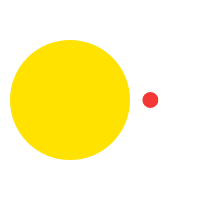The Guide To Choosing The Color For Your Business’ Brand
Many brands are recognized by their color: Coca-Cola red, UPS brown, IBM blue, Tiffany’s different shades of blue, Orange’s orange, and Cellcom’s purple.
Choosing the right color is an important step in the corporate branding process, the consumer grasps the color at the forefront and sees the rest later: the smell, name, color, words, sound, etc.
Why is the color at the forefront?
Color has a collective quality, it is memorable, catchy, and magnetic, and isn’t dependent on words or names. By using color in the branding, the product will attract attention. Color connects with qualities, feelings, and moods.
The color absorbs meaning and is subject to conditioning and associative connection. Colors have become a reservoir of associations, familiar to many.
Colors directly touch our hearts. Since childhood, we are taught to develop emotional feelings for colors. By using colors in the branding process it is safe to assume that the product will be connected to the color and its meaning will accompany the product.
Among the qualities that colors bring, there is no doubt that the one that stands out the most is the emotional significance. Colors tend to induce an emotional atmosphere in the viewer. The connection between the correct brand and the correct color will not only attract the viewer’s attention but will not leave him/her indifferent to the brand or the product. Nonetheless, some colors awaken negative associations among individuals or groups and they are culture-dependent. The conclusion is that color should be used in the corporate branding process while being aware of the huge potential it has as a branding medium, as well as the possible risks.
What is the significance of color in the corporate branding process?
*According to research conducted in the world of advertising in the United States:
The color blue: Blue is considered a cool color, reliable, trustworthy, connected to the sea and sky, and radiates depth, stability, security, and intelligence. It helps the soul, relaxes, and slows down the metabolism. Blue is a popular color among financial institutions.
The color red: Red activates the Pituitary Gland. It is an energetic color, provocative, dangerous, powerful, determined, passionate, loving, and courageous. Red is a very bold and prominent color.
The color green: Green exudes health, harmony and growth, freshness, peace, and calm. Green has healing attributes and improves eyesight. The color green assumes different meanings in the different shades of green, for example, deep green can transmit a feeling of prestige and bright green can transmit a feeling of calm.
The color yellow: Yellow is recognized with the sun. Therefore, it is connected to optimism, warmth, happiness, pleasure, vigor, respect, and loyalty. Certain shades of yellow evoke thought and creativity. The eye discerns shades of bright yellow before any other color, a quality that is well-utilized by signs on points of sale. Nonetheless, the exaggerated use of the color yellow is irritating.
The color purple: Purple is perceived as exciting, passionate, creative, loud, unique, sophisticated, spiritual, mysterious, and royal. Lavender purple exudes nostalgia, gentleness, and sweetness. Purple is the preferred color for transmitting creativity.
The color pink: Bright pink is perceived as soft, romantic, sweet, childish, and delicate. Darker shades of pink radiate energy, happiness, mischief, excitement, passion, warmth, and lightness. Pink is a recommended color for fashionable products for women or girls, but not for luxurious products.
The color orange: Orange combines the energy of the color red and the joy of the color yellow. It is a happy color that is recognizable with abundance, success, happiness, vitality, social, evocative, juicy, and with a special aroma. The color orange enhances the oxygen level of the brain. It works well with food businesses, restaurants, healthcare businesses, and beauty parlors.
The color beige: Beige conveys simplicity, stability, and steadfastness. It is a neutral color, soft and warm. Terracotta Brown is a warm, earthy color, rustic, and welcoming. It is a color that is recognized by traditional industry because of its similarity with the color of the earth.
The color black: Black is perceived as powerful, elegant, mysterious, classic, expensive, sophisticated, heavy, basic, prestigious, and magical. It works well with expensive products but can also convey the impression of a heavy product.
The color charcoal grey: Dark Grey is perceived as powerful, professional, classic, expensive, sophisticated, stable, reasonable, and eternal.
The color silver: Silver is recognized as classic, cold, expensive, valuable, and related to money (finance).
The color white: White conveys simplicity, cleanliness, purity, chastity, naiveté, virginity, and safety. Bright white immediately catches the eye. This color is used in baby and health products.
All colors can be classified into two basic categories: warm and cold. Warm colors such as red or yellow convey energy, while cold colors like blue resonate composure and calm.
Before choosing a color you must ask yourself five questions:
Does the color fit my target audience?
Gender, age, culture, and other demographic variables. Is the central color that I chose unique, does it distinguish me from the competition? (If you are a small brand and choose to identify yourself with the same color as a larger brand, it might be helpful at first but in the long run may strengthen the larger brand).
Does the color I chose relate to the message that I want to make with the brand?
Is it a fashionable, trendy, or long-lasting color? A trendy color is relatable to a younger audience, but will it also affect my older, more conservative audience?
Is the color that I chose practical and will it maintain uniformity?
After you have chosen a color, it is very important to correctly copy the color in the various media; uniformity and consistency are extremely important in branding.
Color trends in the world of corporate branding
Many times you have heard during the branding process “We like it clean”. When they say they want a “clean look” they mean that they want to convey “high-tech”, a minimalist design that includes an abundance of empty spaces and is based on one central color and its various shades, combined with black or dark grey text. Even when you use bolder colors you can still maintain the clean look – it is desirable to tone them down with white/black /grey in a similar dose.
What colors will fit my website?
In today’s virtual world, you are exposed to much visual stimulation, your time and patience have shortened and you have the option to “zap around”. That’s why when you are faced with a website full of color and text that is unfocused, the time in which the user with look at the website is the 7-second test in the sub-conscious, beyond that there are 2 more seconds before he/she will move on to the next website.
A survey conducted in the United States in 2007 rates the popularity of colors in commercials:
- Blue
- Red
- Green
- White
- Pink
- Purple
- Orange
- Yellow
How to incorporate colors in corporate branding
Use a leading color and shades from the same family that creates successful harmony. I suggest drawing inspiration from Adobe which has created a virtual laboratory for us, KULERADOBE, that can be incorporated directly into Adobe Illustrator. Clicking on each color leads to impressive color combinations, try it.
Enclosed is an infographic showing how leading brands use color:
Bibliography:
Color Psychology: Meanings and Effects of Colors*
The Power of Color in Graphic Design
http://www.entrepreneur.com
http://www.brandingstrategyinsider.com
http://kuler.adobe.com/#themes/rating?time=30


